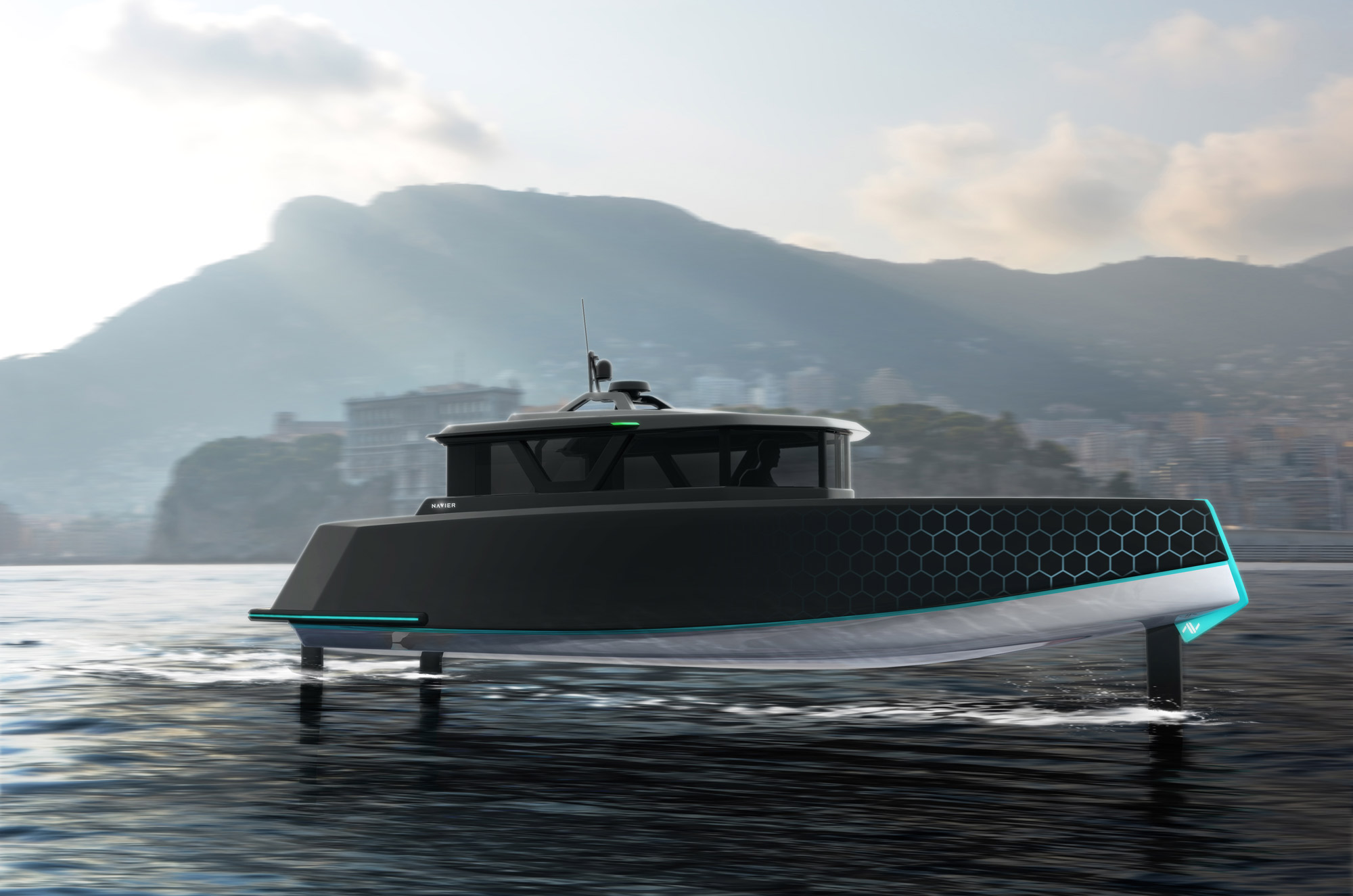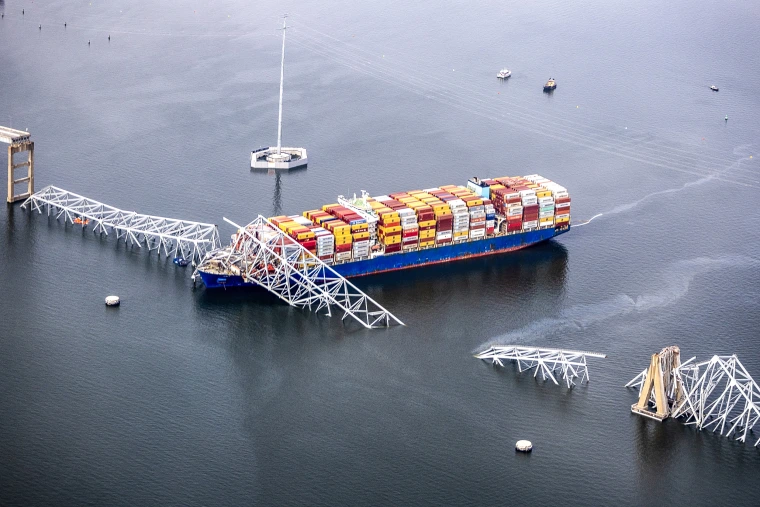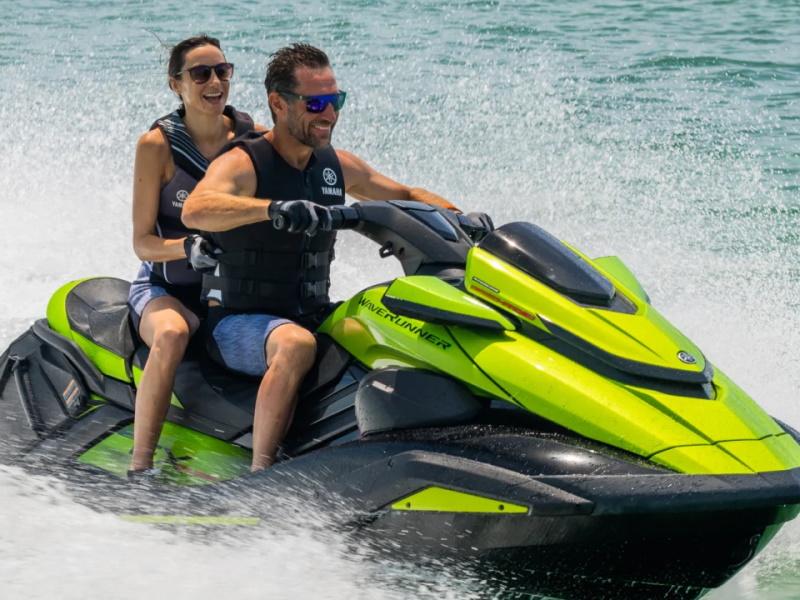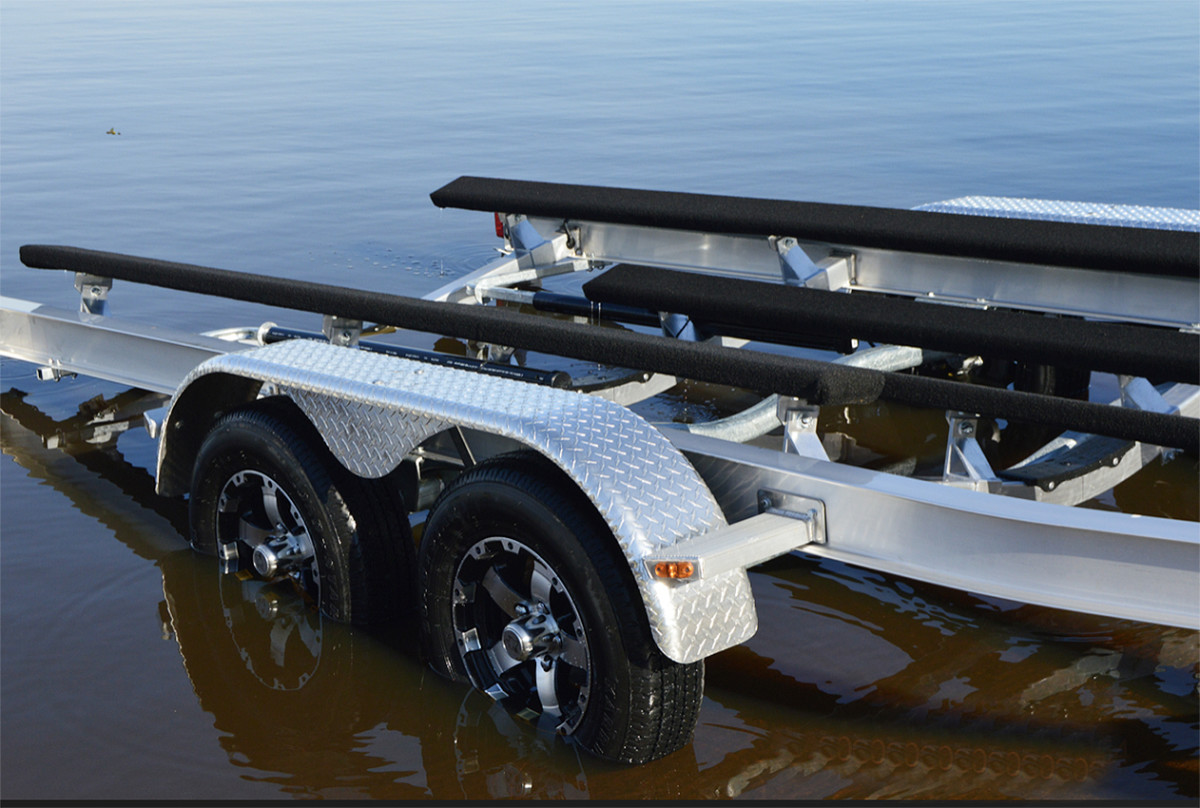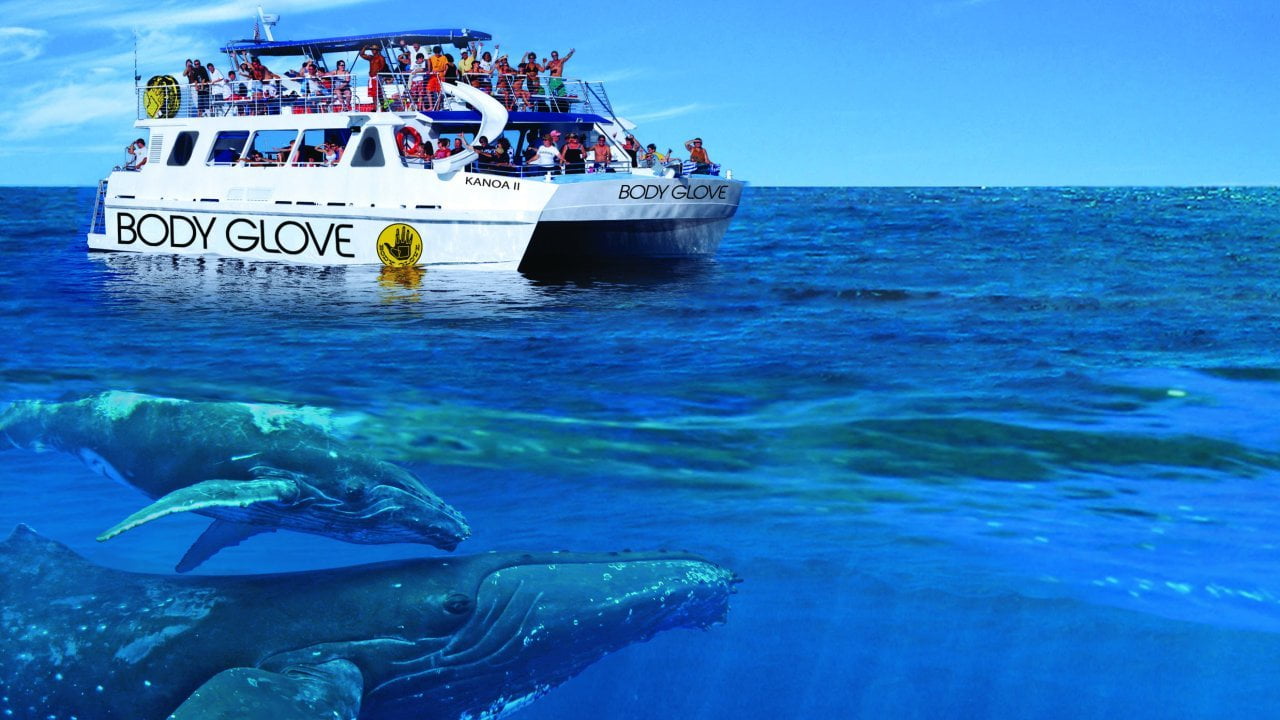Which Action May Cause Loss of Steering Ability in a PWC? Essential Safety Tips
Personal watercraft (PWC) are popular for their speed and maneuverability, providing thrilling experiences for many boating enthusiasts. However, it is crucial to understand and acknowledge the potential risks associated with operating a PWC, particularly with respect to the loss of steering ability. A common situation that may cause the loss of steering ability in a PWC is letting off the throttle control, as it directly impacts the propulsion system and consequently the maneuverability of the watercraft.
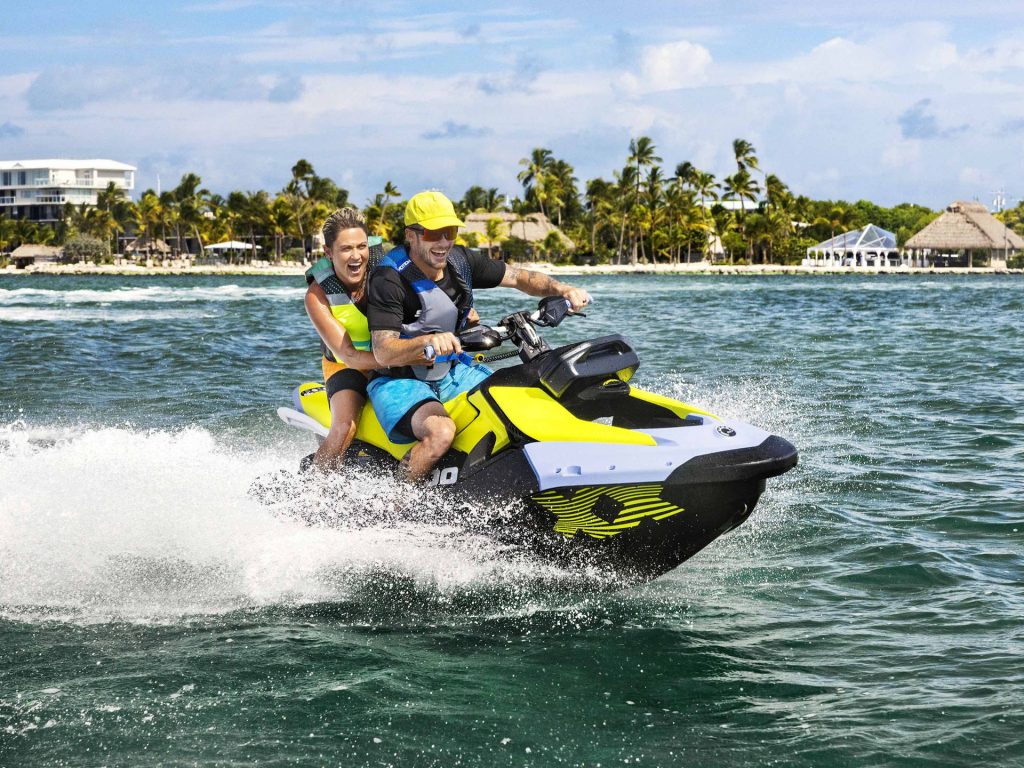
Steering in a PWC is primarily facilitated by a jet drive, where water is drawn into a pump and then propelled out under pressure through a steering nozzle at the rear of the unit. This "jet" of pressurized water is directed by the steering control, meaning when the steering control is turned, the steering nozzle turns in the same direction. Therefore, when the throttle is released, and water propulsion decreases, there is a direct effect on the steering ability of the PWC.
Key Takeaways
- Loss of steering ability in a PWC can be caused by letting off the throttle control
- Steering in a PWC is facilitated by a jet drive and the propulsion of pressurized water
- Releasing the throttle and reducing water propulsion directly impacts PWC's steering ability
Understanding PWC Operation
Personal watercraft (PWC) operation requires a good understanding of the steering components and throttle control to ensure safety and overall control. This section will outline the essential aspects of PWC operation, including components of steering, throttle and speed control, and the role of power in steering.
Components of Steering
PWC steering is propelled by a jet drive system, which uses water pressure to move the craft forward. Water is drawn into a pump and forced out through a steering nozzle at the back of the unit1. This jet of pressurized water is directed by the operator's steering input when the handlebars are turned, the steering nozzle turns in the same direction2. Unlike traditional boats that use rudders, PWCs rely solely on the jet drive system for steering.
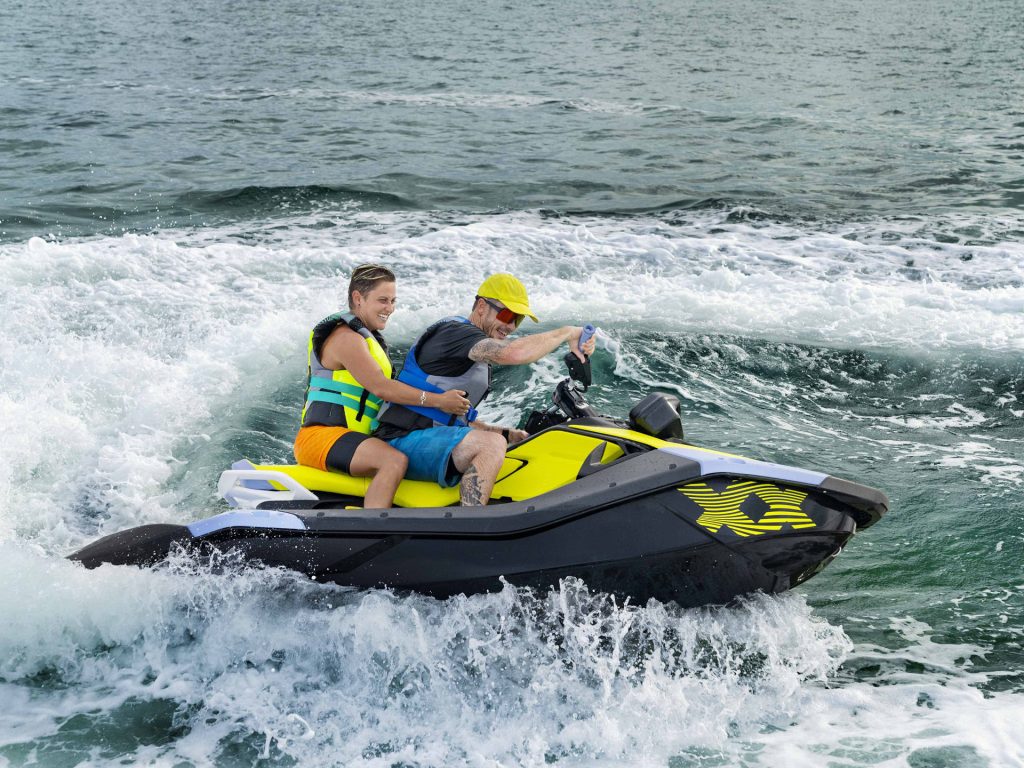
Throttle and Speed Control
In a PWC, throttle control plays a crucial role in maneuvering and maintaining a safe speed. Adjusting the throttle controls the speed of the PWC, which indirectly affects its direction by altering the force of the water jet2. The operator must be mindful of the US Coast Guard rules and regulations regarding speed limits in specific areas to ensure safety and compliance.
The Role of Power in Steering
The power of the PWC has a direct impact on its steering capabilities. When a PWC loses power, it loses its ability to steer1. As the power decreases, so does the force of the water jet, making it more challenging to control the direction. It is essential for operators to keep this in mind, especially when approaching obstacles or other watercraft, as losing steering ability can be dangerous.
By understanding the components of steering, throttle control, and the role of power, operators can safely and confidently navigate their PWCs in various water conditions and adhere to safety guidelines.
Footnotes
- Steering and Stopping a PWC - Boat Ed ↩ ↩2
- What determines the direction a PWC will travel? | PWC Steering Boat ... ↩ ↩2
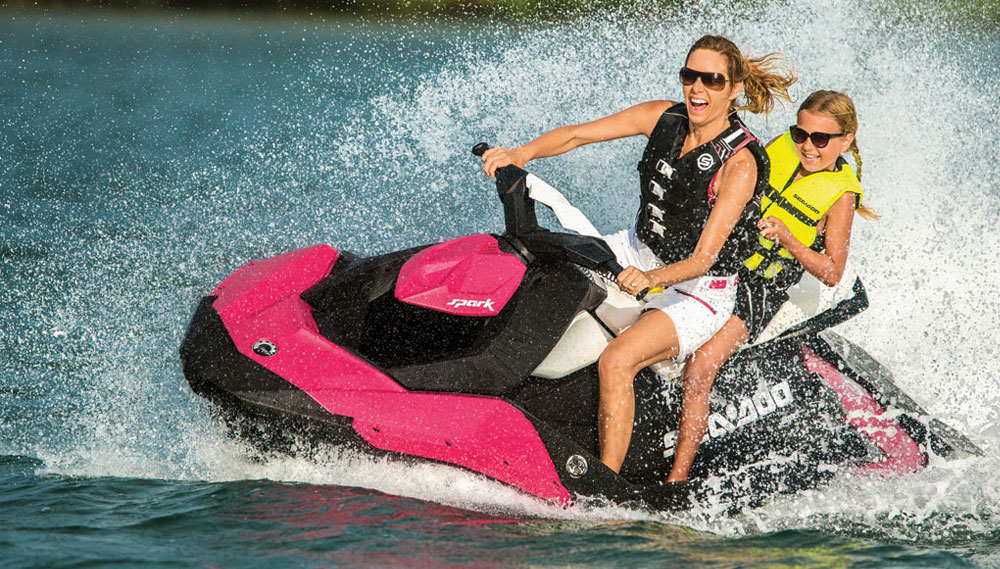
Factors Affecting Steering Ability
Off-Throttle Steering Issues
One common issue affecting the steering ability of a PWC is known as off-throttle steering. This occurs when a rider releases the throttle control, reducing the jet of pressurized water that propels the PWC. As a result, the steering capability is significantly diminished, making it difficult to avoid obstacles or change direction. It is essential for PWC riders to be aware of this issue and try to maintain some level of throttle to ensure proper maneuvering.
Navigational Challenges
Navigating a PWC can be challenging, particularly for inexperienced riders. Some common navigational challenges include:
- Obstacles: PWC riders should be cautious of various obstacles like watercraft, buoys, and submerged objects that may be difficult to see. Proper maneuverability and maintaining a safe speed are crucial in avoiding these potential hazards.
- Steering system issues: Unexpected steering cable malfunctions, damage to the rudder, or other components can affect the PWC's steering ability. Regular maintenance and checks are necessary to ensure optimal steering performance.
- Capacity plate requirements: Overloading a PWC beyond its specified capacity on the capacity plate can negatively impact its steering and maneuverability. Riders should adhere to the manufacturer's recommendations for weight limits and number of passengers.
Handling and Balance
A PWC's handling and balance greatly influence its steering ability. Some factors affecting handling and balance include:
- Rider's position: The rider's body positioning plays a significant role in the PWC's balance and overall maneuverability. Leaning too far to one side or moving abruptly can cause instability and negatively affect steering control.
- Speed control: Maintaining an appropriate speed is vital for optimal steering. Riders must slow down when needed, especially in crowded areas or during turns.
- Experience level: Inexperienced riders may struggle with PWC steering as it takes time to develop the necessary skills for handling and maneuvering. Adequate practice and proper training will help improve steering ability over time.
Safety Protocols and Precautions
PWC Safety Equipment
To ensure safety when operating a personal watercraft (PWC), it is crucial to have the proper safety equipment on board. This includes a lifejacket for each passenger, as well as an automatic cut-off lanyard that stops the engine when disconnected from the operator. Additionally, all PWCs should carry a sound-producing device, such as a whistle or horn, for signaling purposes. It is also wise to have a small fire extinguisher on board in case of an emergency.
Preventing Collision and Capsize
One of the main causes of steering loss in PWCs is letting off the throttle control, which makes it difficult to steer the vessel. To prevent this, operators should always maintain a proper speed and be cautious of their surroundings. Adherence to the navigation rules, right-of-way guidelines, and maintaining a safe distance from other vessels can significantly reduce the risk of collision or capsize. In case of shallow water or debris, the driver must be mindful and avoid such hazards.
Avoiding Water Hazards
Operating a PWC comes with multiple water hazards that require attention, such as anchor lines, river currents, and exhaust fumes. When anchoring, docking, or approaching the shore, operators should ensure their vessel is securely tied and well clear of other boats and swimmers.
Be conscious of swift river currents, as they can pose a serious threat to PWC operators by making it challenging to maintain control and avoid colliding with obstacles. It is best to avoid operating in these conditions if possible.
Lastly, it is essential to be aware of the dangers of carbon monoxide poisoning, particularly when it comes to inboard gas engine exhaust. The US Coast Guard rules and regulations classify PWCs as Class "A" inboard boats, meaning they are subject to certain safety restrictions. Avoid engaging in activities such as teak surfing or platform dragging, as they increase the risk of exposure to harmful fumes. Furthermore, always exercise caution when participating in tow-sports, and ensure all passengers are aware of the risks involved.
Following these safety protocols and precautions will help minimize risks and maintain a safe and enjoyable experience when operating a PWC.
Practical Tips for Maintaining Steering Control
Proper Throttle Use
One of the critical aspects of maintaining steering control in a Personal Watercraft (PWC) is the proper use of the throttle. In a PWC, water is drawn into a pump and forced out through a steering nozzle, propelling the craft forward. The steering is directly related to the throttle control, as it controls the engine's power and PWC's speed. Applying the throttle affects the ability to steer.
It is essential to understand that, in most PWCs, if you let go of the throttle, it may cause a loss of steering ability. Therefore, it is best to maintain a consistent and appropriate throttle level while making a turn with the handlebars.
Dealing with Loss of Steering
In case you experience a loss of steering ability or find that your PWC is not responding to the handlebar's movements, several factors could be responsible. Here are a few steps you can take to regain control:
- Check the throttle: Ensure that you apply the throttle properly since releasing the throttle could cause the PWC to lose steering ability.
- Assess the cables: Inspect the steering cables to make sure they are not damaged, tangled, or disconnected.
- Test the brakes: Some PWC models are equipped with brakes. Familiarize yourself with the braking system and its use in emergency situations.
- Gradually lean into turns: When trying to regain steering control, avoid abrupt movements. Instead, lean gently into a turn to smoothly direct the PWC.
It is essential for PWC operators to understand their craft's steering mechanisms and always be prepared to handle situations where they might experience a temporary loss of control. By being confident, knowledgeable, and maintaining a neutral and clear mindset, PWC riders can ensure a safe and enjoyable time on the water.
Boating Regulations and Compliance
Licenses and Operation Rules
Boating regulations, including licenses and operation rules, are essential to maintain order and safety on the water. It is vital for operators of Personal Watercraft (PWC) to obtain the necessary licenses and understand the US Coast Guard Rules and Regulations. Licenses ensure that PWC operators have sufficient knowledge and understanding regarding their responsibilities when out on the water.
PWCToday, recommends that operators must maintain good control of their vessels, ensuring that they do not lose steering ability. One cause for loss of steering ability in a PWC is letting off the throttle control. Ensuring proper control maintenance is paramount in potentially dangerous situations, thus, having an in-depth understanding of the mechanics and jet drives of PWC is necessary. This information is typically covered in license courses and study material.
Understanding Water Traffic Laws
In addition to obtaining a license and understanding operation rules, PWC operators must also comprehend various water traffic laws. The navigation rules for different bodies of water vary, and it is essential for boaters to have a firm grasp on these rules to avoid potentially dangerous collisions.
Often, water traffic laws can be categorized into two main groups: rules for power-driven vessels and rules for other vessel types such as sailboats, kayaks, and canoes. PWCs are considered power-driven vessels, and thus, operators should familiarize themselves with these specific navigation rules.
When approaching a boat ramp, PWC operators must adhere to unique regulations, such as reducing speed, avoiding the launching and retrieval areas, and yielding to other vessels. Practicing proper PWC operation will not only ensure compliance but also demonstrate respect and consideration for other boaters in the area.
Incident Analysis
Common Causes of Steering Failure
In personal watercraft (PWC) accidents, one major concern is the loss of steering ability. A common cause of steering failure is letting off the throttle control, as the propulsion system relies on the jet drive to maintain steering. When a rider releases the throttle, the loss of water pressure from the jet drive can lead to a decrease in steering control. Maintaining a basic understanding of PWC handling and knowing how the propulsion system works are essential for maintaining steering ability and avoiding accidents.
Other factors that contribute to steering failure in PWCs include:
- Mechanical issues with the steering system
- Debris caught in the propulsion system
- Operator inexperience or improper handling of the PWC
Learning from Past Accidents
According to the search results, the leading cause of PWC accidents is striking an object. This highlights the importance of staying aware of surroundings and maintaining control of the PWC at all times. To prevent future accidents, operators should educate themselves on PWC basics and handling before operating the watercraft.
When analyzing past accidents, we can learn from the mistakes of others and take preventative measures. Some key takeaways include:
- Stay attentive: Be aware of your surroundings, including other vessels, swimmers, and obstacles.
- Maintain control: Keep a firm grip on the handlebars, releasing throttle gradually to minimize potential steering loss.
- Know PWC basics: Familiarize yourself with the watercraft's propulsion and steering systems, as well as local laws and guidelines for PWC operation.
- Prioritize safety gear: Always wear a lifejacket, and ensure the engine cut-off switch is attached to your wrist or lifejacket.
By understanding these common causes of steering failure and learning from past accidents, PWC operators can work to minimize risks and enjoy a safer experience on the water.
Planning and Preparedness
Pre-Ride Checklists
Before embarking on your PWC journey, it is crucial to carefully prepare a pre-ride checklist. This includes inspecting the personal watercraft for any damages or potential hazards that might affect your ride. Make sure to check for any visible issues such as frayed lines or loose connections. A thorough examination of the steering system can help prevent the loss of steering ability, as it enables you to identify potential problems before they turn into accidents.
A float plan is a useful addition to the pre-ride checklist. This document should contain your intended route, departure time, estimated return time, and contact information for emergency situations. A float plan ensures that others are aware of your whereabouts in case of an accident or other issues.
Additionally, carrying an anchor on board is a proactive measure that can be beneficial in case of an emergency, such as loss of steering ability or engine failure.
Emergency Procedures
Planning for emergencies is an essential aspect of PWC safety. Familiarize yourself with the basic emergency procedures and techniques to handle situations like capsizing, engine troubles, or steering loss. Knowledge of these procedures helps you to act quickly and confidently during an emergency.
PWC safety relies on both the operator's awareness of their surroundings and their understanding of how the watercraft functions. Losing steering ability in a PWC can occur due to improper maintenance or mechanical issues1. It is important to remember that when operating a PWC, one loses the ability to steer the vessel when their hand is taken off the throttle2. This happens because the stream of water that propels the PWC is the same mechanism enabling its steering.
In conclusion, emphasizing the importance of planning, preparedness, and understanding your PWC's mechanics increases overall safety and ultimately leads to a more enjoyable experience on the water. Regular maintenance, adherence to pre-ride checklists, and knowledge of emergency procedures contribute to the prevention of accidents and better overall PWC operation.
Footnotes
- BoatUSFoundationVA Chapter 6 Flashcards | Quizlet ↩
- Controlling a Personal Watercraft - Boater Education ↩
Frequently Asked Questions
What can cause a PWC to lose steering power?
A PWC may lose steering power when the throttle is released. This is because the water stream that propels the PWC is also responsible for its steering. When you let off the throttle, the water stream's force decreases, leading to a reduction in steering capabilities. Letting off the throttle control is the main cause of loss of steering ability in a PWC.
Why is it necessary to maintain throttle while steering a PWC?
Maintaining throttle while steering a PWC ensures that there is a constant stream of water being expelled through the nozzle, giving the operator control over the direction of the watercraft. Easing up on the throttle causes the steering capabilities to diminish, making it difficult to control the PWC's direction.
What are potential consequences of releasing the throttle during operation of a PWC?
Releasing the throttle during the operation of a PWC can result in loss of control over the direction, reduced maneuverability, and possible collisions with other vessels or objects. It becomes difficult to steer the PWC and avoid hazards without sufficient throttle.
How does engine throttle relate to directional control in personal watercraft?
Engine throttle directly impacts the directional control of a PWC. It determines the force of the water stream expelled through the nozzle, which is responsible for steering the watercraft. Pressurized water expelled from the nozzle contributes to the PWC's direction and turning capabilities, so maintaining a consistent throttle is essential for effective steering.
What operational behaviors should be avoided to maintain control of a PWC's direction?
To maintain control of a PWC's direction, operators should avoid suddenly releasing the throttle or rapidly changing speeds. This ensures that the water stream maintains sufficient pressure to enable accurate steering. Being aware of proper PWC operation techniques can help minimize the risk of losing directional control.
What safety equipment should be onboard to prevent loss of steering on a PWC?
There is no specific safety equipment designed to prevent loss of steering on a PWC. However, having a working kill switch and wearing a life jacket can reduce the risk of injury if loss of control occurs. Also, practicing and understanding proper operation procedures, such as maintaining throttle to navigate and steer effectively, can help prevent loss of steering on a PWC.
Charlie is Editor-in-Chief of Sea Magazine
